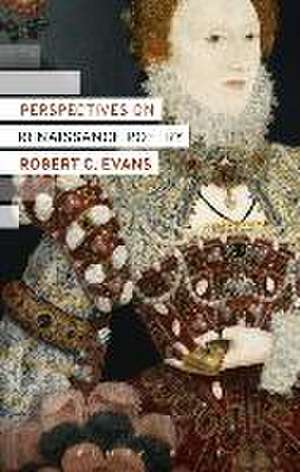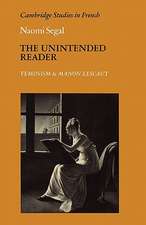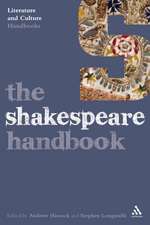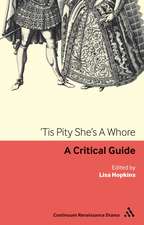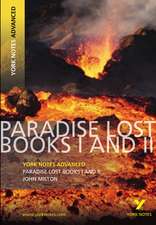Perspectives on Renaissance Poetry
Autor Dr Robert C. Evansen Limba Engleză Hardback – 21 oct 2015
| Toate formatele și edițiile | Preț | Express |
|---|---|---|
| Paperback (1) | 179.10 lei 3-5 săpt. | |
| Bloomsbury Publishing – 21 oct 2015 | 179.10 lei 3-5 săpt. | |
| Hardback (1) | 567.33 lei 6-8 săpt. | |
| Bloomsbury Publishing – 21 oct 2015 | 567.33 lei 6-8 săpt. |
Preț: 567.33 lei
Preț vechi: 726.22 lei
-22% Nou
Puncte Express: 851
Preț estimativ în valută:
108.57€ • 112.93$ • 89.63£
108.57€ • 112.93$ • 89.63£
Carte tipărită la comandă
Livrare economică 14-28 aprilie
Preluare comenzi: 021 569.72.76
Specificații
ISBN-13: 9781472505705
ISBN-10: 1472505700
Pagini: 240
Ilustrații: black & white illustrations
Dimensiuni: 138 x 216 x 14 mm
Greutate: 0.42 kg
Editura: Bloomsbury Publishing
Colecția Bloomsbury Academic
Locul publicării:London, United Kingdom
ISBN-10: 1472505700
Pagini: 240
Ilustrații: black & white illustrations
Dimensiuni: 138 x 216 x 14 mm
Greutate: 0.42 kg
Editura: Bloomsbury Publishing
Colecția Bloomsbury Academic
Locul publicării:London, United Kingdom
Caracteristici
Accessible structure, annotated further reading and glossary of authors provide quick access to key information
Notă biografică
Robert C. Evans is Professor of English at Auburn University Montgomery, USA. He is the author or editor of approximately twenty books (more than half on the 17th century) and has won a number of teaching awards.
Cuprins
PrefaceAcknowledgmentsIntroduction: Sir Walter Ralegh (1552-1616): "What Is Our Life?"1. Sir Thomas Wyatt (1503-42): "They fl ee from me"; "My lute, awake!"2. Henry Howard, Earl of Surrey (1517-47): "Love, that doth reign and live within my thought"; "Th'Assyrians' king, in peace with foul desire" 3. Anne Vaughan Locke (1534?-after 1590): "And then not daring with presuming eye"; "Have mercy, God, for thy great mercy's sake"4. Sir Philip Sidney (1554-86): Astrophil and Stella 5 ("It is most true"); Astrophil and Stella 71 ("Who will in fairest book")5. Edmund Spenser (1552-99): Amoretti 68 ("Most glorious Lord of life"); Amoretti 75 ("One day I wrote her name"); The Faerie Queene , I.i-ii6. Christopher Marlowe (1564-93): "The Passionate Shepherd to His Love"; "Hero and Leander" (excerpt) 7. William Shakespeare (1564-1616): Sonnets 3 and 147; "Venus and Adonis" (excerpt)8. John Donne (1572-1631): "The Flea"; "Holy Sonnet 14" 9. Aemilia Lanyer (1569-1645): "Eve's Apology in Defense of Women" (excerpt); "The Description of Cookham" (excerpt) 10. Ben Jonson (1572-1637): "On My First Son"; "To Penshurst" (excerpt)11. Lady Mary Wroth (1587-1651/3): "Like to the Indians"; Martha Moulsworth (1577-1646): "The Memorandum of Martha Moulsworth, Widow" (excerpt)12. George Herbert (1593-1633): "Redemption"; "The Collar"13. Robert Herrick (1591-1674): "Corinna's Going A-Maying"; "To the Virgins, to Make Much of Time"14. Katherine Philips (1632-64): "Upon the Double Murder of King Charles"; "Friendship's Mystery"15. Andrew Marvell (1621-78): "To His Coy Mistress"; "The Mower against Gardens"16. John Milton (1608-74): "Lycidas" (excerpt); Paradise Lost, Book 12 (excerpt) Afterword: Critical Pluralism: "A Contemplation on Bassets-down-Hill" by Anne KempAppendix: The Kinds of Questions Different Critics Ask Christina M. GarnerBibliographyFurther ReadingIndex of Theories and Applications
Recenzii
This primer in applied critical theory bridges the gap between early modern English poetry and various analytical approaches to literature. It is more focused than other introductory guides to criticism, such as Wilfred Guerin's Handbook of Critical Approaches to Literature (1966; 2nd., 1979) and Charles Bressler's Literary Criticism: An Introduction to Theory and Practice. Evans (English and philosophy, Auburn Univ., Montgomery) offers paragraph-length summaries of 20 critical methodologies and demonstrates, in chapter-length discussions, how they elucidate some 30 Renaissance poems by writers from Wyatt to Milton (included are several poems by Emilia Lanier, Anne Vaughn Lock, and Lady Mary Wroth). Evans's style is direct and accessible but never simplistic. Not every method is applied to every text (one misses a psychoanalytic reading of Donne's 'Flea' and 'Holy Sonnet 14'), but Evans succeeds in showing how early modern texts might respond to a variety of reading approaches. Specialists may find the book's design somewhat schematic, but the intended audience (less experienced readers) will welcome Evans's concise yet careful distinctions among a variety of potentially challenging, theoretical strategies. Supplementary materials by Anne Kemp and Christina Garner offer useful additional examples of explication and a taxonomy of critical methods. Summing Up: Highly recommended. Lower- and upper-division undergraduates; graduate students; general readers.
Perspectives on Renaissance Poetry aims to demystify literary theory for undergraduates and largely succeeds at doing so . Evans explains complex concepts in admirably clear and simple language, making this an excellent text for a theory course aimed at advanced undergraduates. His focus is on teaching students to recognize the questions, concerns, and habits of thought underlying each critical approach, rather than the jargon. The appendix, with its detailed lists of questions that different critics might ask of a text, is particularly helpful at guiding students to apply these ideas . This book effectively illustrates, in clear and simple language, how and why readers can arrive at such different interpretations of the same text, even within a single critical framework . Students should come away from Evans's book with an enhanced sense of how and why familiarity with theory can make their readings of primary texts richer.
A useful reference work . Texts of poems are followed by discussion using different critical approaches, offering paragraph-length accounts of twenty critical methodologies and showing, through application of one or several of them to individual poems, the ways in which they enrich thirty Renaissance poems. Mainly aimed at undergraduates, there is much to be gained from Evans's sensible discussions.
Perspectives on Renaissance Poetry aims to demystify literary theory for undergraduates and largely succeeds at doing so . Evans explains complex concepts in admirably clear and simple language, making this an excellent text for a theory course aimed at advanced undergraduates. His focus is on teaching students to recognize the questions, concerns, and habits of thought underlying each critical approach, rather than the jargon. The appendix, with its detailed lists of questions that different critics might ask of a text, is particularly helpful at guiding students to apply these ideas . This book effectively illustrates, in clear and simple language, how and why readers can arrive at such different interpretations of the same text, even within a single critical framework . Students should come away from Evans's book with an enhanced sense of how and why familiarity with theory can make their readings of primary texts richer.
A useful reference work . Texts of poems are followed by discussion using different critical approaches, offering paragraph-length accounts of twenty critical methodologies and showing, through application of one or several of them to individual poems, the ways in which they enrich thirty Renaissance poems. Mainly aimed at undergraduates, there is much to be gained from Evans's sensible discussions.
